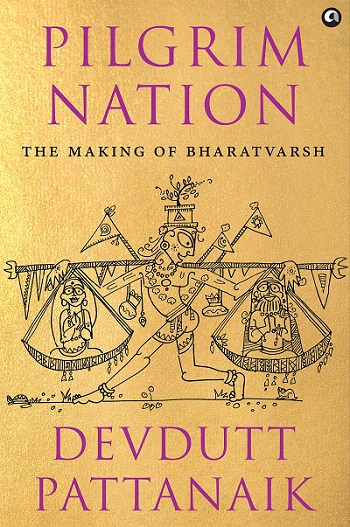Pilgrim Nation – The making of Bharatvarsh by Devdutt Pattanaik takes you across 32 pilgrim sites across India. Written in a chronological manner it takes you through Vedik Age, Shramana Age, Puranic Age, Tantrik Age, Islamic Age, Bhakti Age, European Age & Nation-State. Some pilgrimage spots are described under each of these.

Now, I really do not agree with this chronological categorization. For example, the Tantrik age was not really pan-India. The Islamic age and Bhakti movement existed at the same time, in fact, one led to the other.
I would not comment on the choice of pilgrim places that the author chooses to take his readers to. But, I must mention that he has tried to do a balancing act to cater to all possible audiences. I have been to 27 of these 32 pilgrim places mentioned and most of them feature on my travel blog – IndiTales. One of the 5 left – Sharda Peeth is kind of out of bounds for Indians at the moment and I assume even the author has not really visited it. I did learn about one place – the Renuka Yellama temple in Karnataka that I did not know of.
Buy Pilgrim Nation by Devdutt Pattanaik at Amazon
I have read many books by Devdutt Pattanaik. He is increasingly getting into dichotomies. For him every pilgrimage place is about a conflict between two opposing entities – be it Shaivism and Vaishnavism, be it Vedik and folk deities, be it battle of sexes or be it Buddhism vs Brahminism. Almost every place he only looks at the conflict that may have existed. I wonder if he ever saw the unifying factor of pilgrimage places that are shared by people coming from different corners of the country.
I see a lot of mistakes and misunderstandings in the book. Pointing out some of them:
- There are editorial (?) mistakes like saying Mathura is in the East.
- Kashi was a part of the Kaushal Kingdom. No idea where this comes from. Both in Mahabharta and Ramayana, it is an independent kingdom.
- At Kolhapur, the author does not understand the difference between Lakshmi who is the consort of Vishnu and Mahalakshmi who is the Adyashakti. I believe he needs to read Devi Mahatmaya properly, especially the Vaikritikam Rahasaya.
- In his Tantrik section, he mentions the Bhairava temple of Delhi. But completely misses the presence of a lone surviving Yogini temple and the fact that the city was once called Yoginipura.
- I do not agree that Sikhism happened at the interface of Hinduism and Islam. It was a slice of Hindus that fought with the Islamic rulers.
- At one place he indicates Bengali temples are different from Hindu temples. This could be a language issue but then that is how it comes across to the reader. He calls Ratha architecture of Bengal with spires on top as an import from Islam. I wonder where it comes from.
- For the name of Dakshineshwar Kali temple, he relates it to Daksha or the fact that the goddess traveled towards Dakshin or South – really? It was just built at the village named Dakshineshwar and hence the name. Dakshineshwar is a form of Shiva as Guru. This extrapolation worried me for you are weaving stories where none exist.
- Not sure why he included the Taj Mahal in the list of Pilgrimage places. As far as my understanding goes, no one treats it as one. The only exception may be the western world that travels to India only to see the Taj Mahal.
I liked some parts of the Pilgrim Nation. For example, his categorization of the varnas as priests, warriors, agriculturists, and artisans. At another place, he answers the western eye that often misinterprets the polytheistic nature of Indic faiths.
Read More – The Art Of Pilgrimage By Phil Cousineau
In the end, the Mumbaikar in him takes over and he thinks fans visiting the homes of Bollywood stars are also making a pilgrimage. Sure, pilgrimage is a personal journey to fulfill a longing. And you can have a longing to see a film star in real life.
If you have not traveled enough, this book will introduce you to some important pilgrimage places in India from every possible faith. However, do you get a dip in the nature of these sacred spaces – I seriously doubt.
Take your call.








